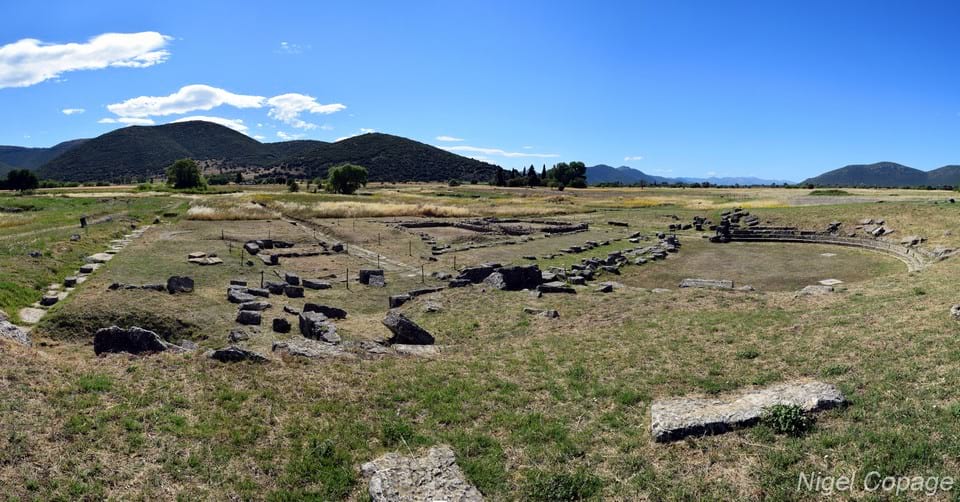
Mantinea is best known as the site of two major battles, the first of which was the largest land battle of the Peloponnesian War. Although the area was inhabited from the Bronze Age, Mantinea reached its height during the Classical period and was an important city state in ancient Arcadia, second only to neighbouring Tegea.
Mythology
According to legend, the city was founded by the Greek hero Mantineus who was one of many sons of Lycaon, the first King of Arcadia. Mantineus was therefore the grandson of Lycaon’s father, Pelasgus, the mythical ancestor of the Pelasgians, the original habitants of Greece. The patron god of the city was Poseidon, a deity worshipped in many cities of Arcadia with his principal temple at Mantinea.
History
The first known habitation of this area was of the Mycenean era, evidence of which has been found on nearby Gourtsouli hill, 1.5km north of the archaeological site of Mantinea. This hill was also the location of a small settlement and cult centre during the 8th and 7th centuries BC.
Mantinea is mentioned by Homer who described it as a “terpni hora” (pleasant place). Homer also lists it in the Iliad as one of the cities that provided ships during the Trojan war.
Prior to the classical period, Mantinea consisted of 5 villages but around 500 BC these were merged to form a single city (as had happened in nearby Tegea). As it grew Mantinea became a rival to Tegea which was then the most important city in Arkadia. They often quarrelled, especially over control of the water channels which could be used to deliberately flood the plain which lay between them for defensive purposes.
Mantinea is the site of two major battles the first of which was the largest land battle of the Peloponnesian War. In 420 BC Mantinea joined an alliance with Argos, Elis and Athens against Sparta. And two years later, in 418 BC after an attack by the Argive coalition against Tegea, the Spartan king Agis marched his army north to Tegea. During the ensuing battle the leader of the Athenians, Laches was killed resulting in a rout of the Argive alliance. This was a classic “hoplite” battle and is described in great detail by Thucydides in his “History of the Peloponnesian War” (5.66-74).
The second major battle took place in 362 AD when this time Mantinea sided with the invading Theban forces against the allied forces of Athens and Sparta. Although the Thebans appeared to be victorious, their leader Epaminondas was killed and they failed to press their advantage leaving the outcome inconclusive.
In 222 BC Mantinea rebelled against Macedonian rule and the city was subsequently destroyed by the Macedonian king Antigonus III Doson although he later rebuilt it and christened it “Antigoneia”. It retained this title until the second century AD when the Roman Emperor Hadrian gave the city its original name. Later in the Byzantine era, it was known as Goritza by which time it had dwindled to little more than a small village. At some point during the Ottoman period it was totally abandoned.
Just opposite the entrance to the archaeological site and impossible to miss is Agia Fotini (St Fotini) which has to be one of the strangest churches in Greece. It was built during the 1970s by the unconventional architect Costas Papatheodorou in a style which defies classification. The building incorporates elements from all periods of Greek civilisation from the classical age, through the Byzantine era until the modern Christian period. Critics are divided as to whether the result is a masterpiece or simply a tasteless eyesore!
Excavations
Excavations of Mantinea were first conducted by the French School from 1887-89 under the leadership of G G. Fougères and V. Bérard.
Click here for information on tickets, opening hours etc
Click here for a video of Mantinea and nearby Nestani by Philip Bekyros
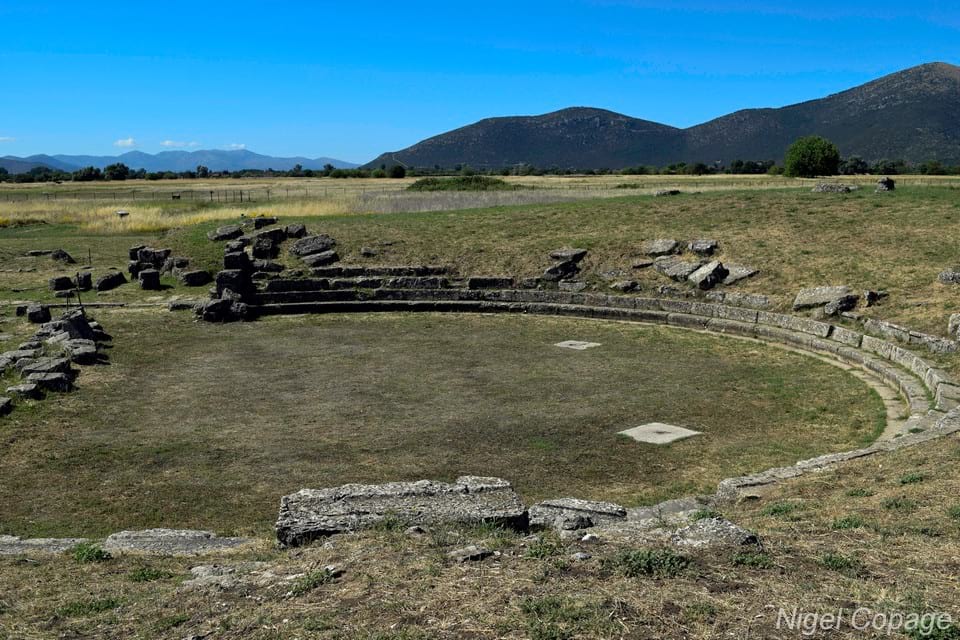
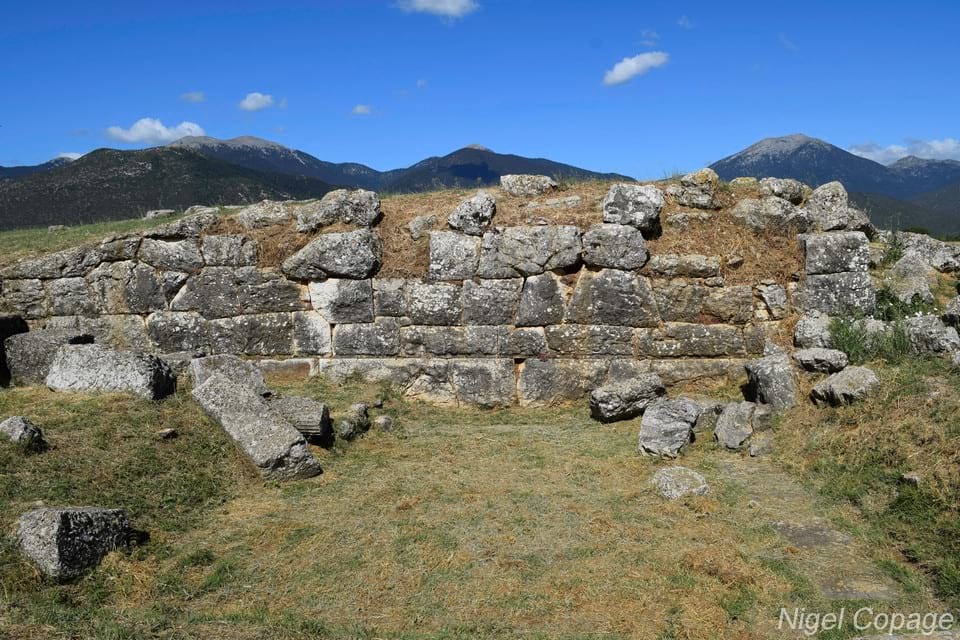
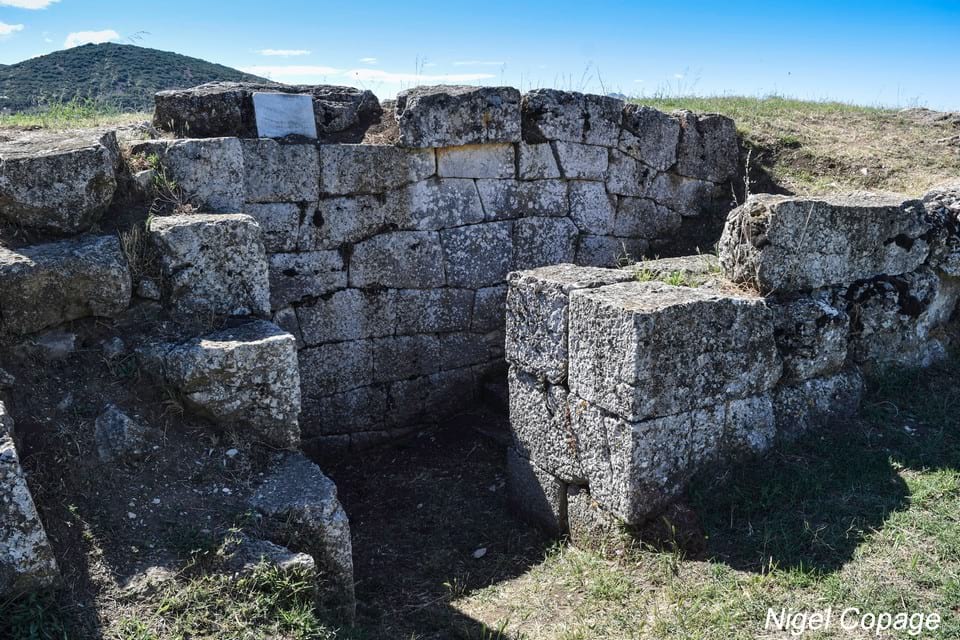
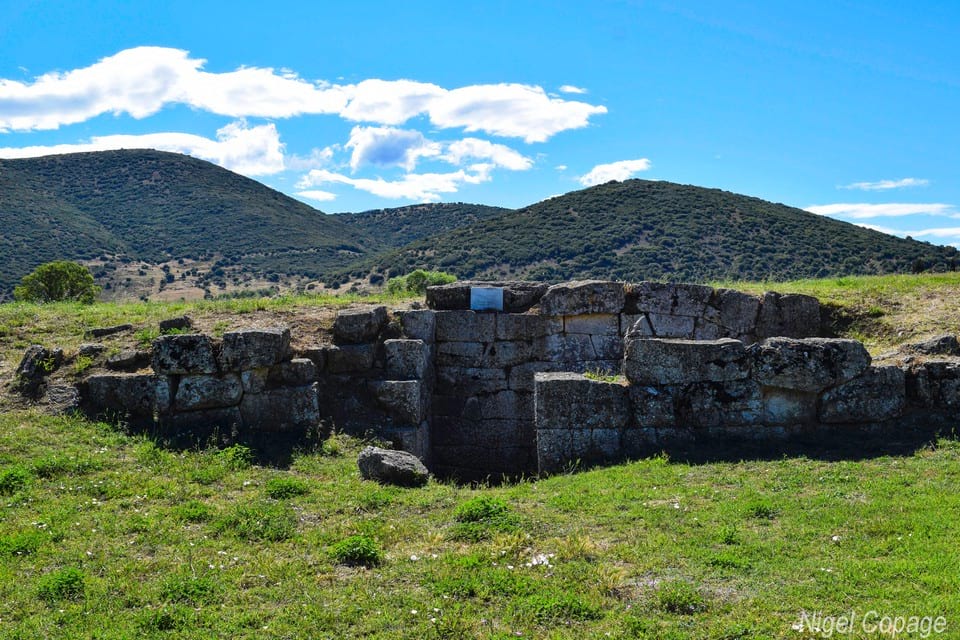
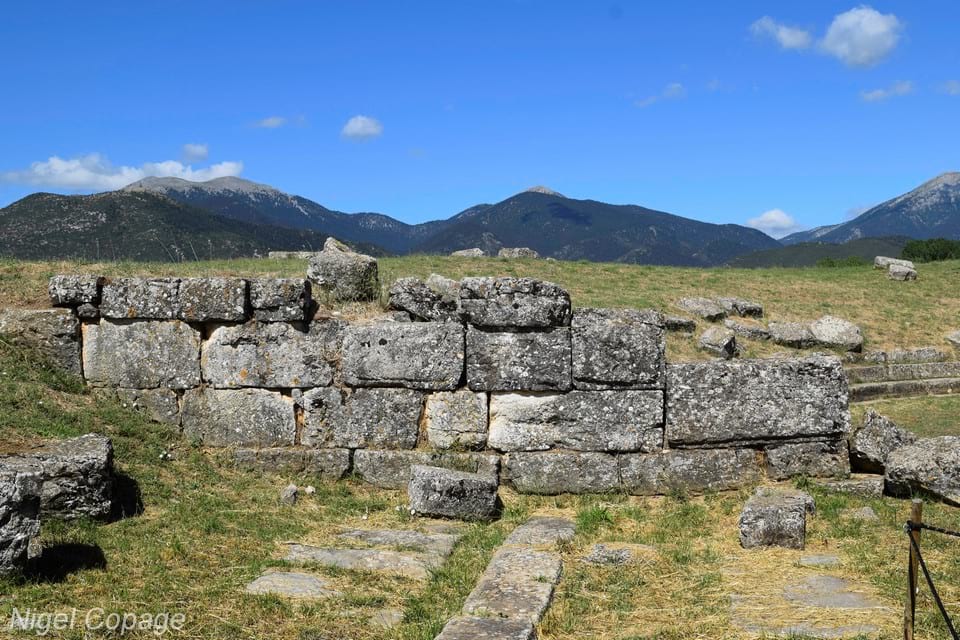
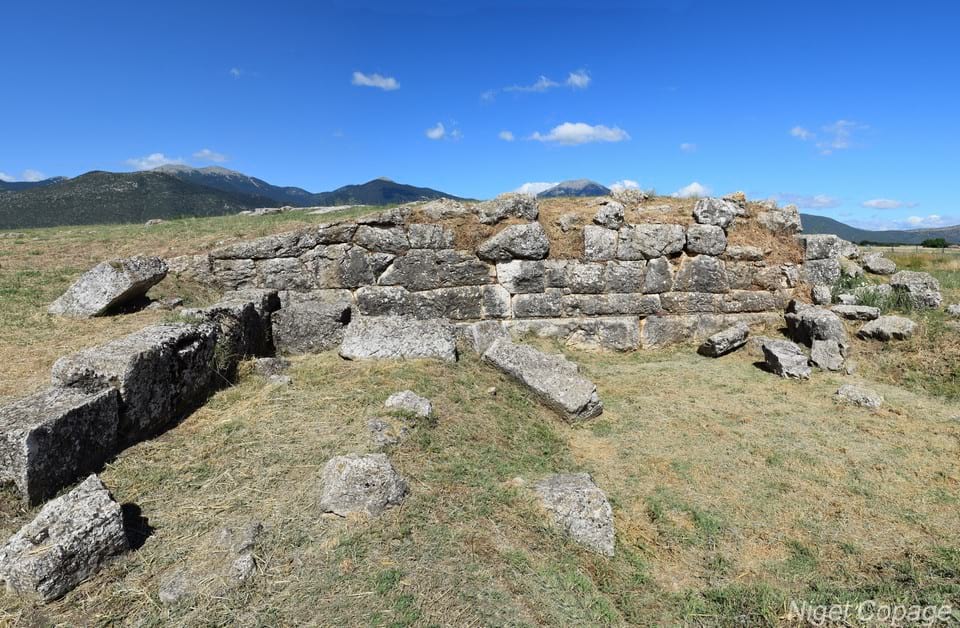
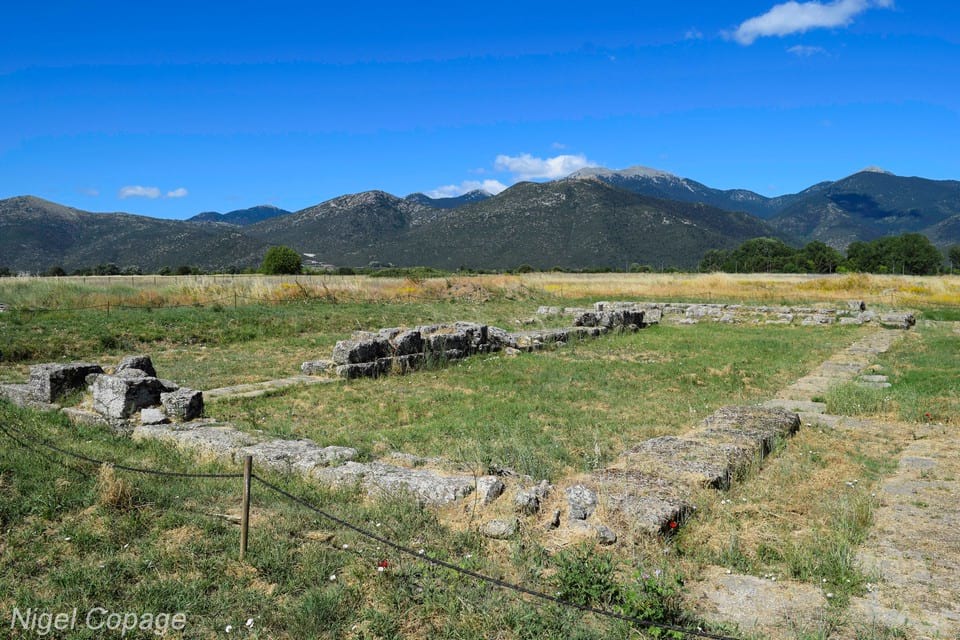
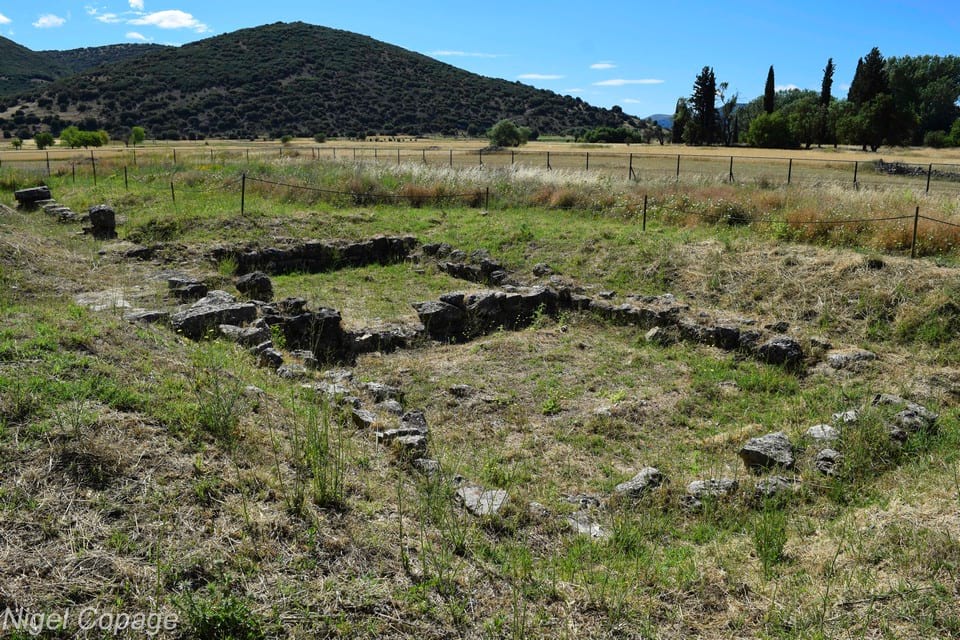
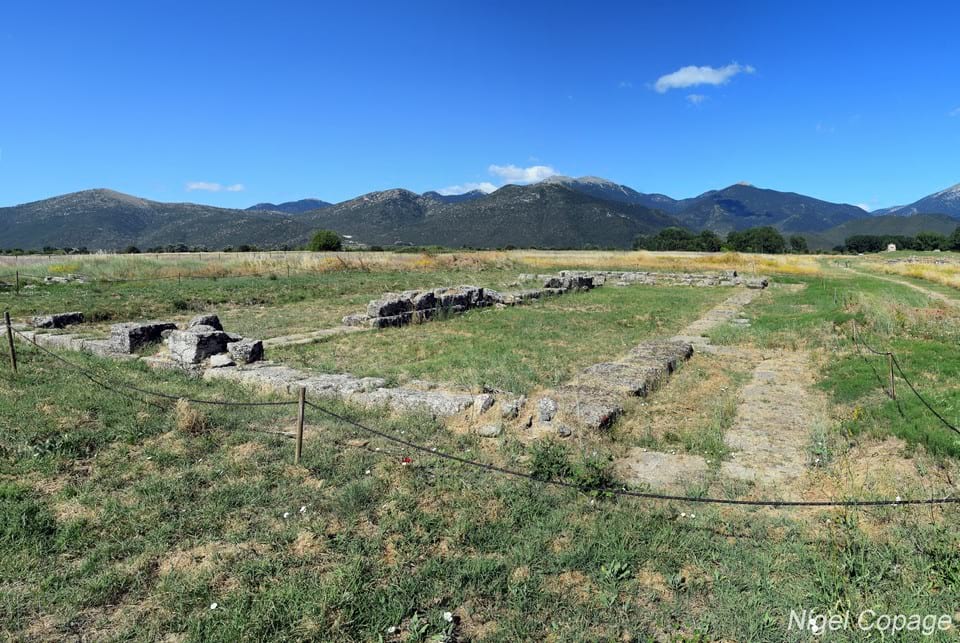
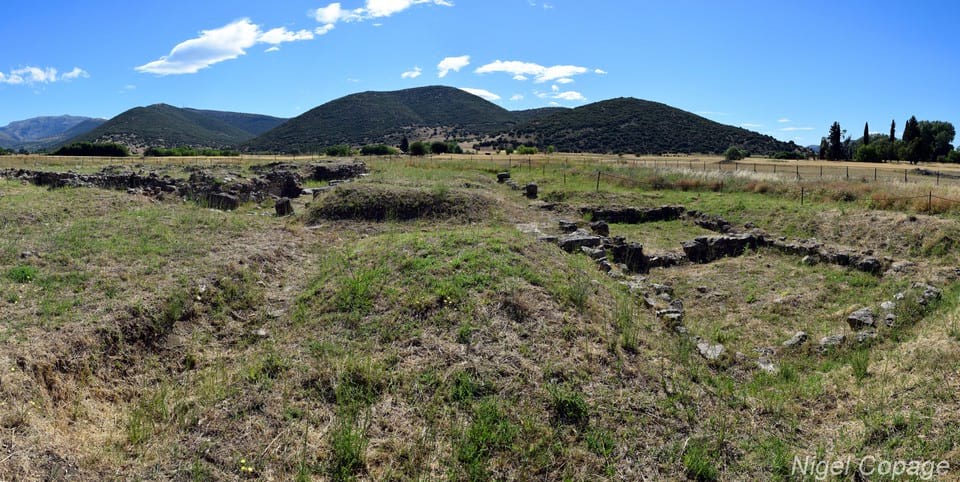
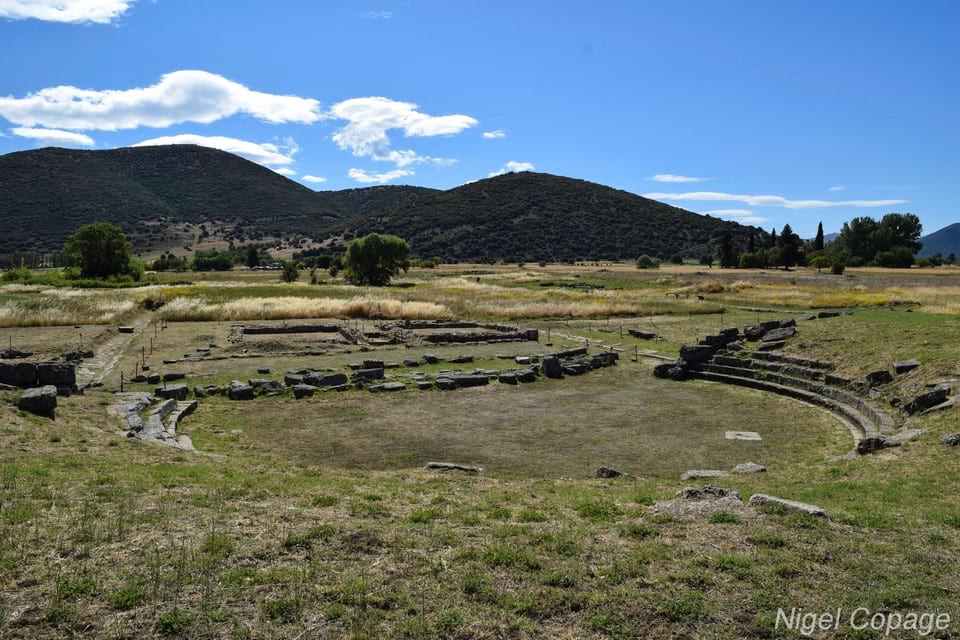
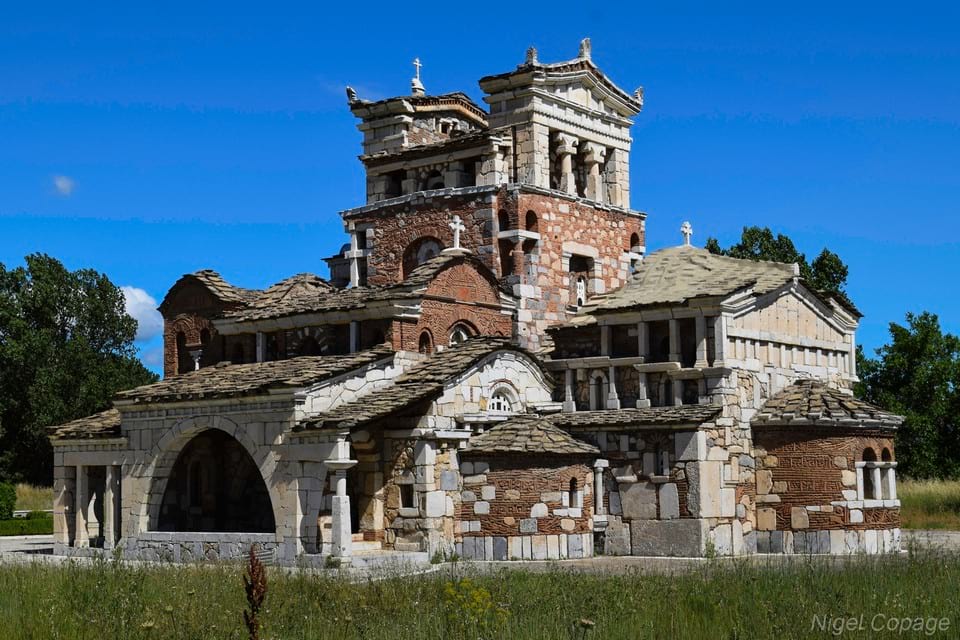 The nearby church of Agia Fotini
The nearby church of Agia Fotini